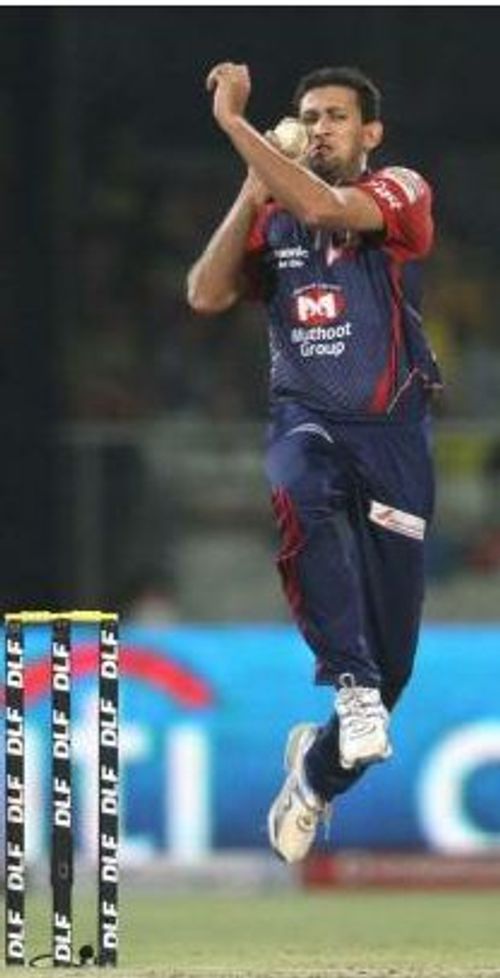
Five Lessons IPL Teams Need to Learn
1. Quality bowlers are worth more than quality batsmen

There is a dearth of Indian easy-to-smash medium-pacers out there, and packing your side with them will not get you far. A quality pace bowler will. Deccan Chargers were particularly guilty of this, when Delhi chased 188 with ease, thanks to a David Warner century – he didn’t have to worry about Dale Steyn and was able to smash a pop-gun attack of the likes of TP ‘six inches’ Sudhindra around the park. Incredibly, Delhi did not take note of this, and shocked everybody by dropping their bowler of the tournament Morne Morkel for their semi-final against Chennai.
Royal Challengers Bangalore were the other main culprits of packing their side with batting, in turn neglecting their bowlers completely – they would have qualified for the top 4 with ease had they persisted with Vettori, McDonald or Dirk Nannes (the 2nd leading T20 wicket-taker of all time).
Despite being a bowler with proven T20 pedigree, Dirk Nannes didn’t play a single match this IPL. Malinga, Morkel, Narine (player of the tournament) and Steyn all proved their worth as match – winners with the ball, whereas on the whole, match-winners with the bat are ten-a-penny in the IPL – put this down to the abundance of quality Indian IPL batsmen relative to the lack of quality Indian IPL bowlers.
2. ALWAYS have an all-rounder in your side
The T20 format lends itself perfectly to three-dimensional cricketers – they don’t have to take wickets and score big runs every game, but even if they can chip in with cameos, their job is done.

Kieron Pollard, Albie Morkel, Irfan Pathan and Dan Christian didn’t finish the tournament at the top of the run charts or as leading wicket-takers, but on the whole, they provided solid and reliable options for their respective captains. Having a solid 5th or 6th option with the ball instead of a rookie Indian medium-pacer allows you to play a specialist international fast bowler such as Hilfenhaus or Malinga.
Balance is crucial to a successful IPL side, and it’s no surprise that Chennai packed their side with three all-rounders in Morkel, Bravo and Jadeja. It allows them to have a floating batting order, as well as a myriad of options with the ball – even if a couple of bowlers have an off-day, these overs can be made up without too much of a fuss.
Once again, RCB struggled in this department – with Chris Gayle largely unable to bowl, they were stuck with six batsmen and five bowlers for most of the tournament. This meant that if one bowler had a horror show, a part-timer had to make up for it…often resulting in hilarious consequences.
3. Your best batsmen must face the most balls
There were a few outstanding batsmen who just didn’t get a good enough shot this IPL.

AB de Villiers (RCB): S/R 161, faced 198 balls. Teammates Kohli (S/R 111) and Dilshan (S/R 109) ate up 326 and 261 balls respectively.
JP Duminy (Deccan): S/R 128, at an average of 81.3! He faced just 190 balls in the tournament – in a side where he should have been the star batsman at no. 3, Duminy was often left languishing below the likes of Parthiv Patel and a struggling Kumar Sangakkara. He would have walked into most other sides in the tournament, but only played 9 games for Deccan!
Rajasthan were also particularly guilty of this fatal error, often opting to send in the hapless Shreevats Goswami or the perenially out-of-nick Ashok Menaria ahead of world-class T20 batsmen such as Owais Shah and Brad Hodge. It was a peculiar sight to see Hodge – the 2nd leading T20 run-scorer of all time – coming in at no. 6, a symptom of an utterly inept strategy.
Limited overs cricket is all about making the most of your resources, and the batsmen with the highest strike rates MUST face as many balls as possible. Even allowing for the likes of Morkel being a ‘finisher’, he only faced an average of 4 balls per match!
This point is closely linked with the ODI/T20 Wickets In Hand Fallacy™.
4. Break the back of chase during the Batting PowerPlay

The first six overs of a chase are no time to dawdle – we saw many chases of facile targets come unstuck due to poor planning. Most pitches in India slow down in the last quarter of a T20, and it generally becomes noticeably tougher to slog your way out of trouble.
Seemingly low chases of 130-150 can lull sides into thinking that they can stroll through the opening overs, and with wickets in hand, they can always make up runs at the end. The key is to get the run rate down to under 6 an over ASAFP.
This failed chase of 153 by Rajasthan against Delhi was an excellent example of this – 40/0 after 6 overs and the Royals were seemingly in control, but in fact, they had failed to accelerate against the new ball. Rajasthan hadn’t accounted for Ajit ‘The Eagle’ Agarkar taking one of the catches of the tournament, and they finished just three wickets down (including a run-out off the last ball), showcasing their poor planning and failure to maximize their resources.
5. Don’t spend $2m on Ravi Jadeja
But if you do, at least make him do ridiculous things!
